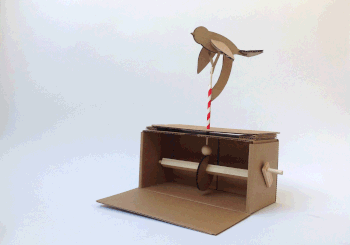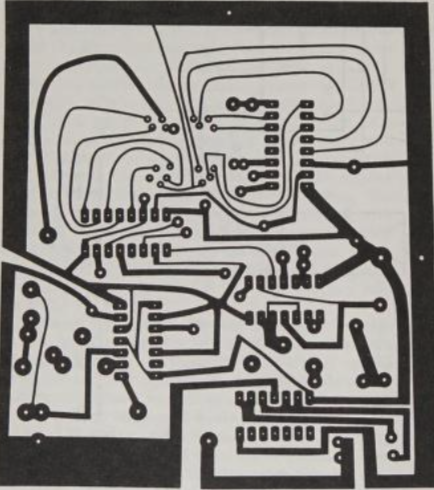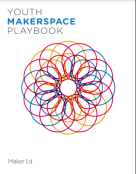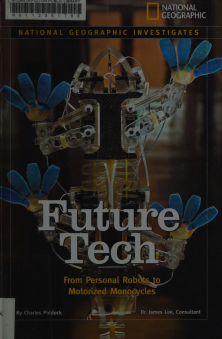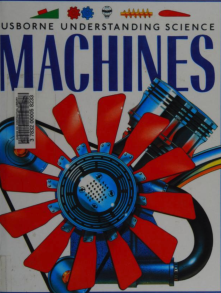Think Like An Engineer
The Scientific Method
For every successful attempt, mark it down and after a pre-decided amount of success reward with a larger reward. Best would be a mixture of events (doing things together) and tools (pliers, hammer, screwdriver, boxes of screws, nuts and bolt, and so on).
Mechanical engineering for ages 6-12
- Force and motion
- Levers and linkages
- Energy transformation
- Gears and simple machines
- Fluid Mechanics
- Simple Machines
- Structures
Forces and Motion
Explanation: Forces make things move or stop moving. When you push or pull something, you're using force.
 Activity! Tug-of-war
Activity! Tug-of-war
A simple game of tug-of-war can demonstrate opposing forces.
 Activity! Kicking Sports
Activity! Kicking Sports
Grab your sports shoes and get outside. It is simple enough to demonstrate the relationship between the force of a kick and how far it goes - stand far away from a wall (goal), farther than you think you could easily kick it to hit the wall. Ask child to kick the ball to the wall to score a point. Quickly, the child might realize that they either have to kick really hard to get the ball to cross the desired distance or get closer.
 Activity! Straight or Fast
Activity! Straight or Fast
Create two slopes, one curved and one straight. Test which gets the ball to the finish line first and why.
Energy Transfer
Explanation: Energy can change from one form to another, like potential energy becoming kinetic energy.
 Activity! Pendulum painting
Activity! Pendulum painting
Swing a paint-filled cup to show energy conversion.
Mess ALERT
 Activity! Domino chain reaction
Activity! Domino chain reaction
Set up a few dominoes to demonstrate energy transfer - then knock them down. Ask child to make their own - give them ALL the dominoes!
Gears and Rotation
Explanation: Gears are wheels with teeth that can transfer motion and change speed or direction.
 Activity! Cardboard Gears
Activity! Cardboard Gears
Make interlocking gears from cardboard to show motion transfer.
 Activity! Wheel Gyroscope
Activity! Wheel Gyroscope
To create a small-scale gyroscope using a toy car wheel, start by removing the wheel and axle from a toy car. Attach a short wooden dowel or sturdy rod to each end of the axle, creating handles. Ensure the wheel can spin freely between these handles. To demonstrate the gyroscopic effect, spin the wheel rapidly by rolling it along a flat surface or using your hand. Then, hold one handle and let the other end hang freely. You'll observe that the spinning wheel resists changes in orientation, demonstrating the principles of angular momentum and gyroscopic precession. This simple device allows you to explore fundamental physics concepts in a compact, easily manageable form, perfect for classroom demonstrations or at-home experiments.
 Activity! Wind-up toy dissection
Activity! Wind-up toy dissection
Take apart a wind-up toy to see the gears inside. Create your own (SPOOL RACER)
Fluid Mechanics
Explanation: Fluids (liquids and gases) behave in certain ways when forces are applied to them.
 Activity! Bernoulli's principle straw
Activity! Bernoulli's principle straw
Place some drops of paint on a coloring book page. Blow across a straw to move the paint around, demonstrating air pressure.
 Activity! Archimedes' Screw
Activity! Archimedes' Screw
Make your own Archimedes' screw!
Simple Machines
Explanation: Simple machines make work easier by changing the direction or amount of force needed.
 Activity! Lever Lifter
Activity! Lever Lifter
Use a ruler and fulcrum to lift objects.
 Activity! Cardboard Automata
Activity! Cardboard Automata
- Build a simple mechanical toy using cardboard, skewers, and paper fasteners.
- This shows how cams and followers can convert rotary motion into linear motion.
Structures
Explanation: Structures are things built to support weight or resist forces. They can be found everywhere, from buildings to bridges to furniture.
![]() Challenge! Cross Over
Challenge! Cross Over
A bridge is simply a way to get across a gap. Challenge your child - place to chairs fairly close and ask - how can I drive my car from one chair to the other. Let the fail! Let them struggle. Only offer material choices after a five or six failed attempts. Attempt to make 10 different types of bridges out of things around the house (like books, blocks, different types of toys).
![]() Challenge! Newspaper Tower
Challenge! Newspaper Tower
How to demonstrate stability, balance, and the importance of a strong base? Try the newspaper tower challenge! Ask your child to build the tallest free-standing tower using only newspaper and tape.
![]() Challenge! Earthquake Proof Building
How to show structures can absorb and distribute forces? Set up a space that can simulate an earthquake (like a big cardboard box - stable when not in motion, but can then be shaken). Ask child to build a structure that can withstand an earthquake. They can build the house out of any of the things they have (blocks, magnets etc), but it has to be functional - the owner needs to be able to get in and out.
Challenge! Earthquake Proof Building
How to show structures can absorb and distribute forces? Set up a space that can simulate an earthquake (like a big cardboard box - stable when not in motion, but can then be shaken). Ask child to build a structure that can withstand an earthquake. They can build the house out of any of the things they have (blocks, magnets etc), but it has to be functional - the owner needs to be able to get in and out.
Waste to Electricity and other similar projects by Dr. A Sajidas
Shake tinfoil create electricity? Try it at home!
Resources
Try a similar experiment at home, using a twist tie, aluminum foil, paper, LED light, and tape.





